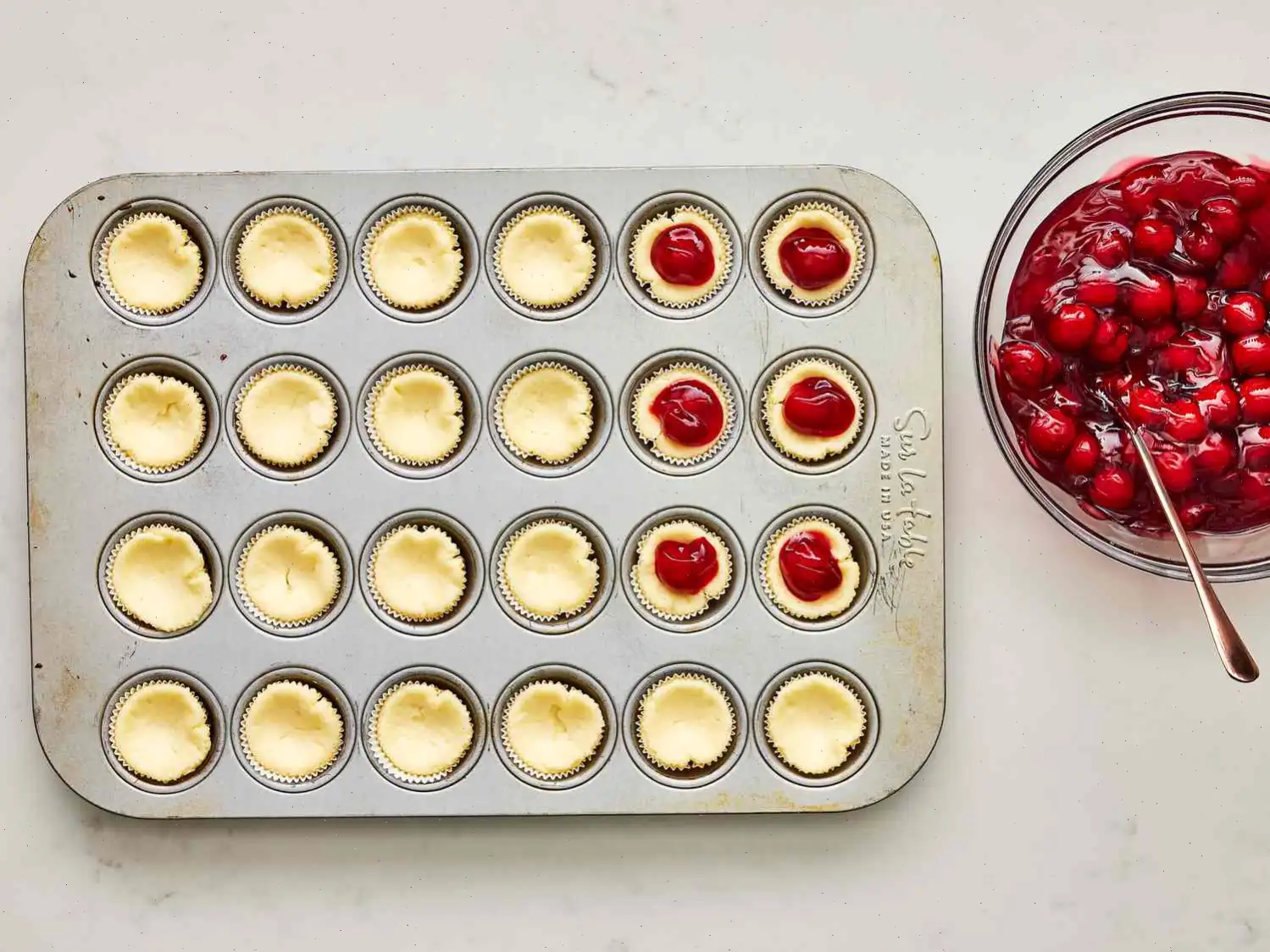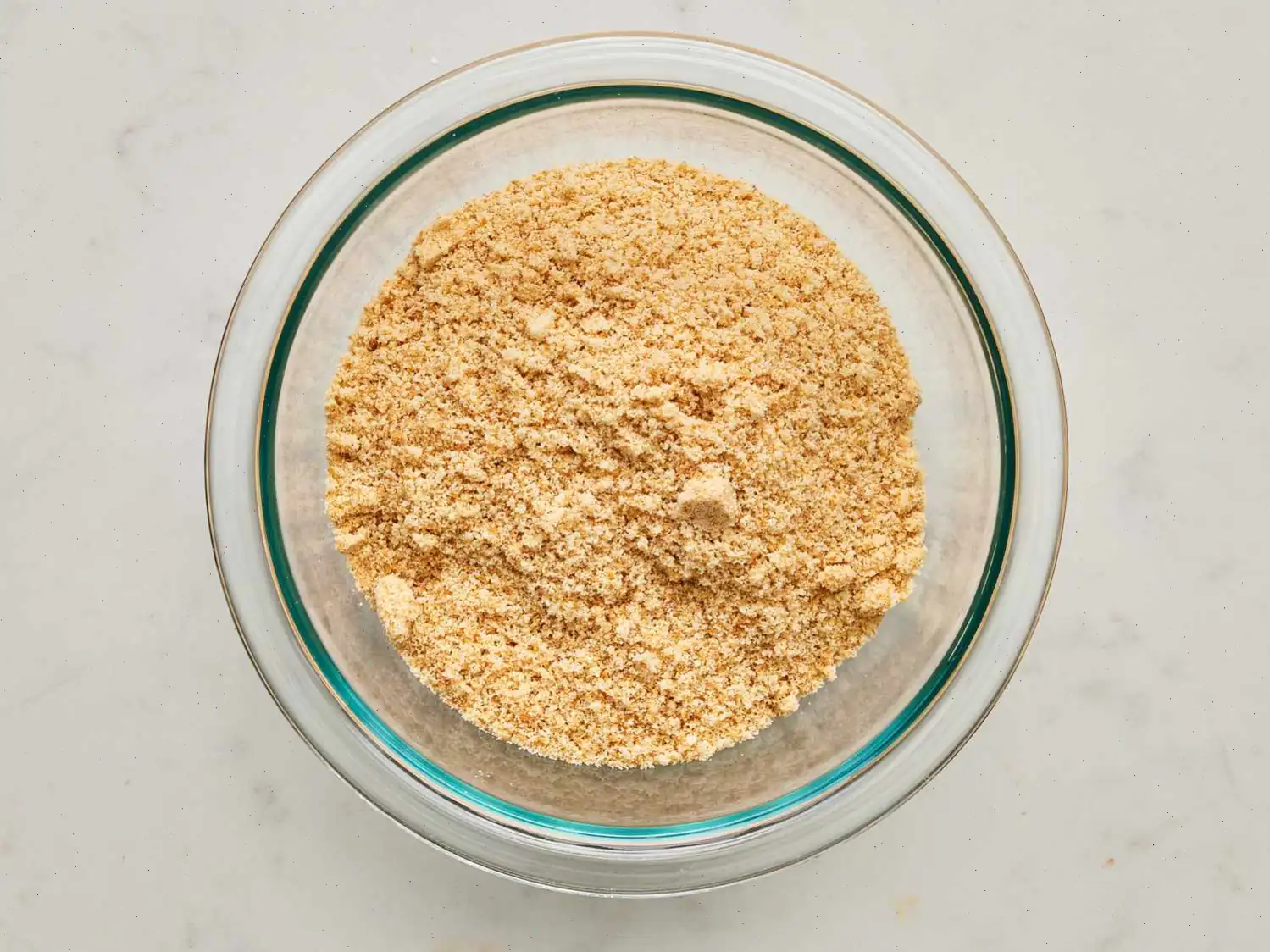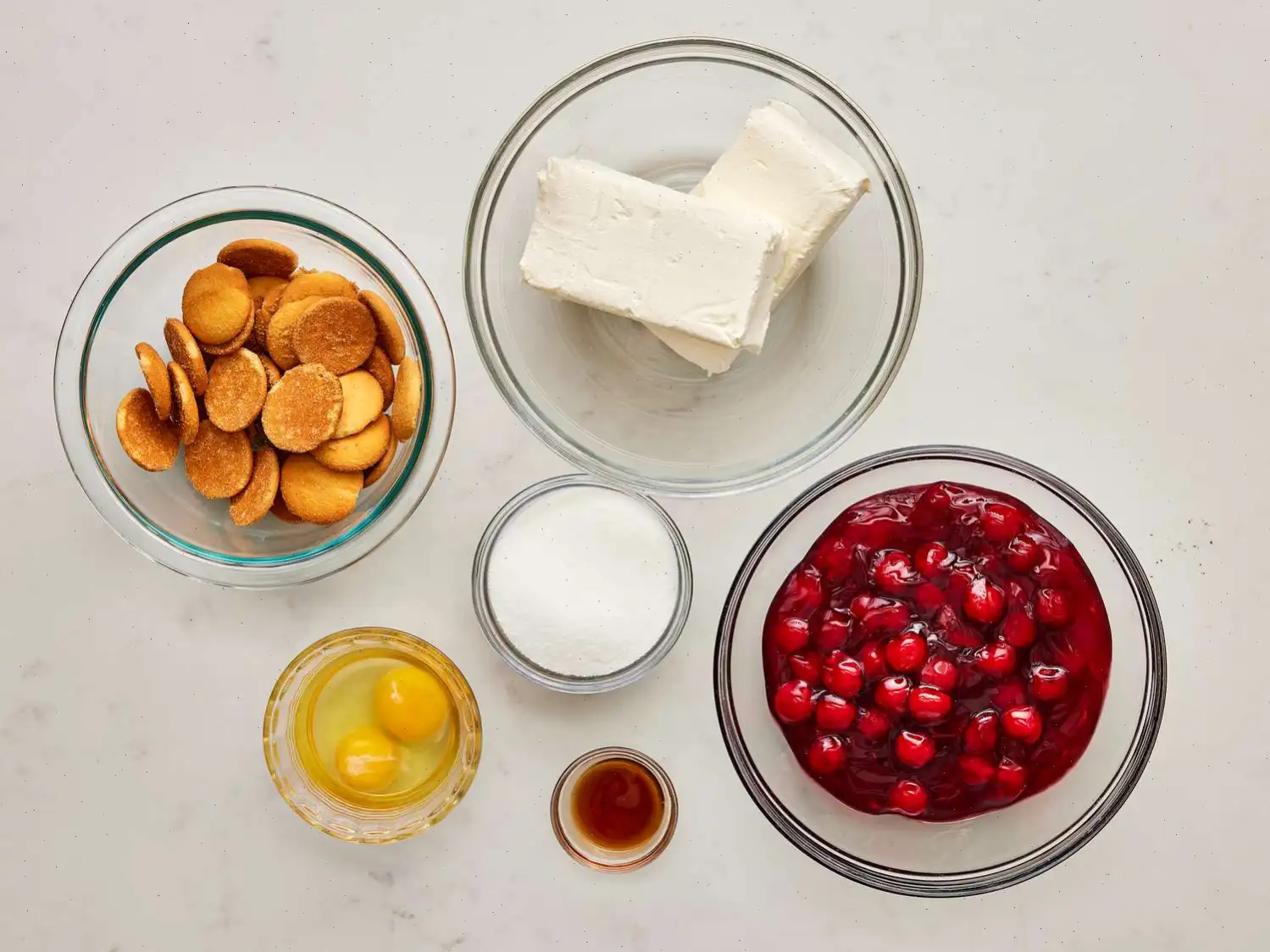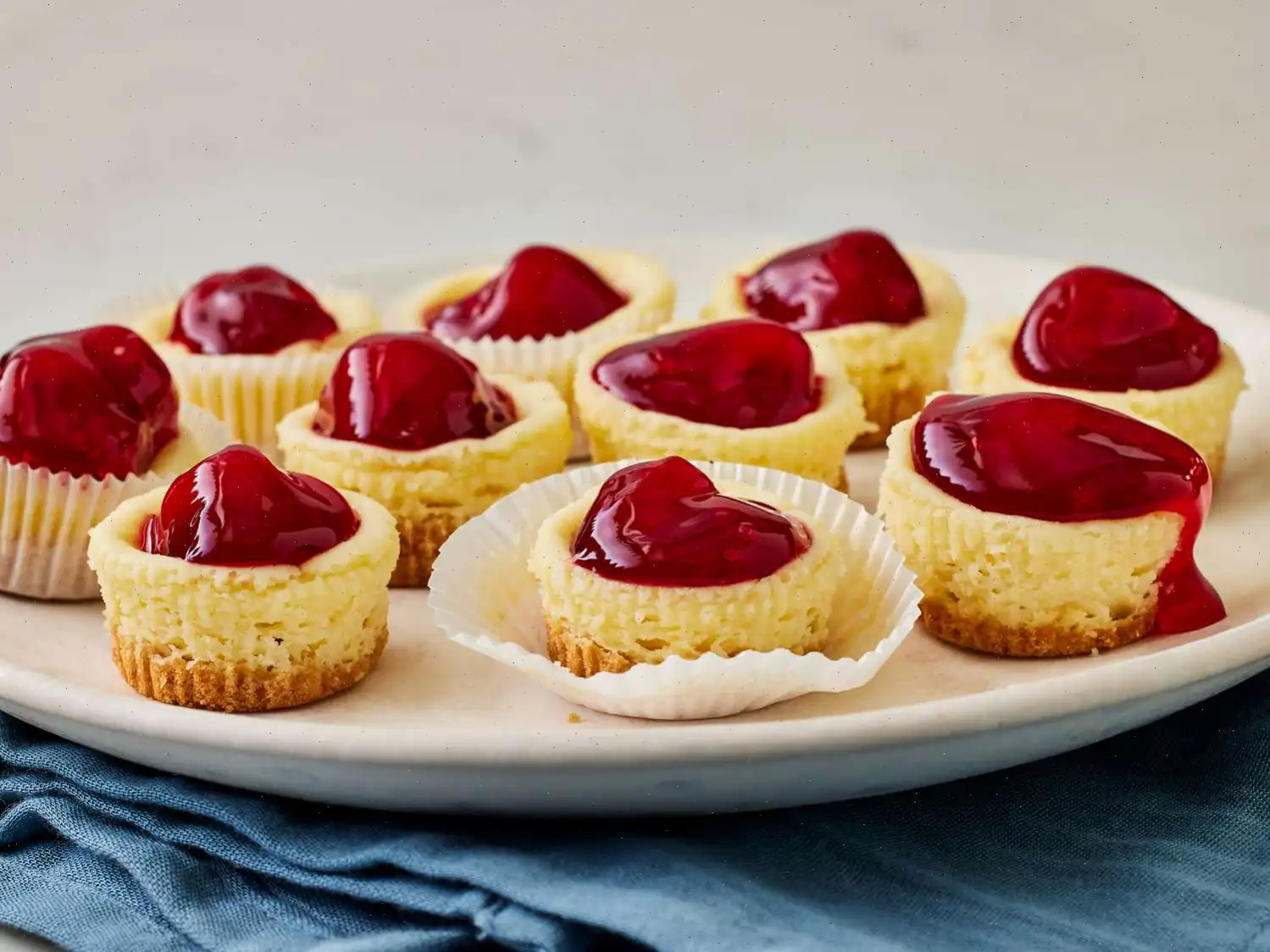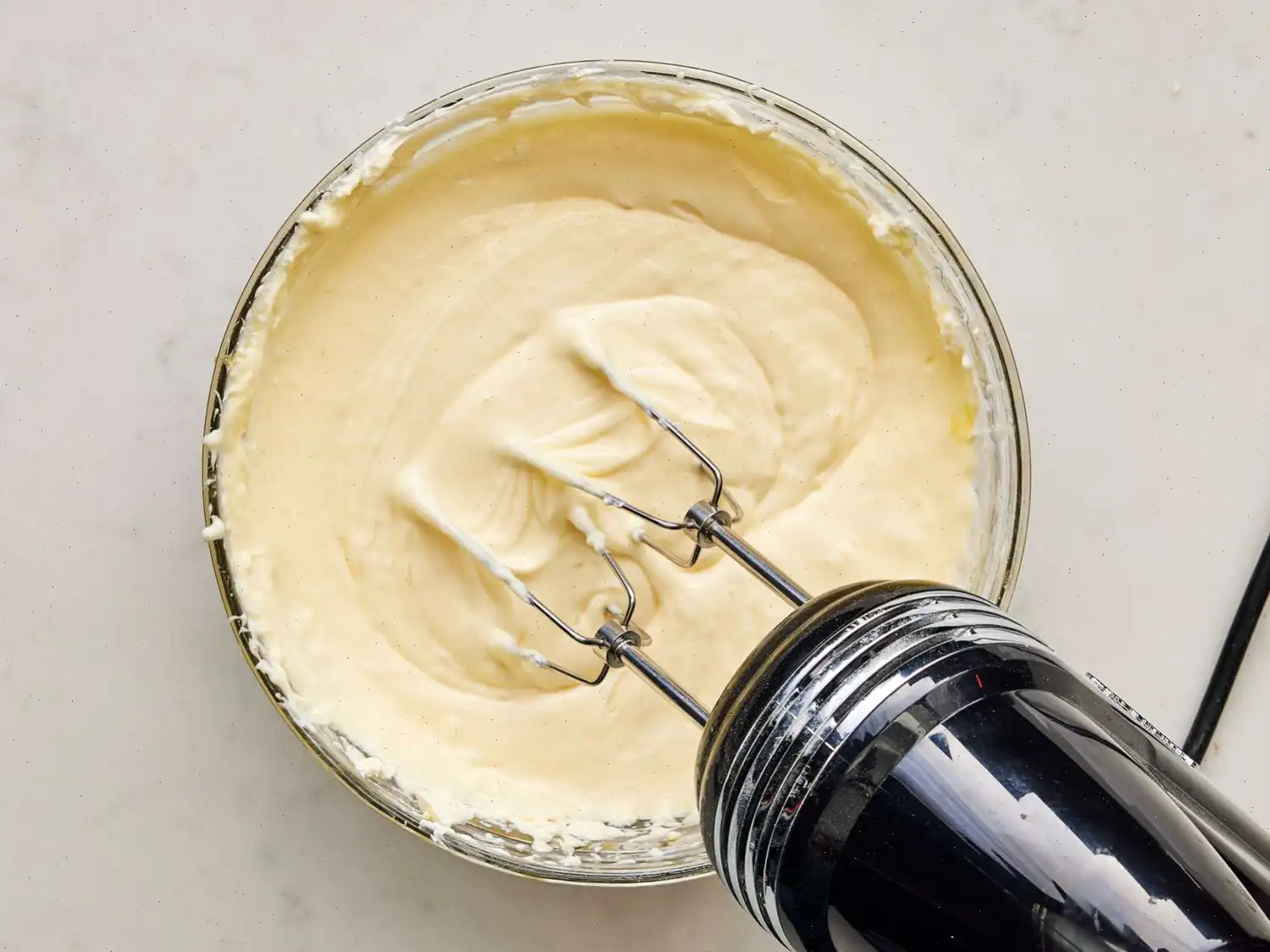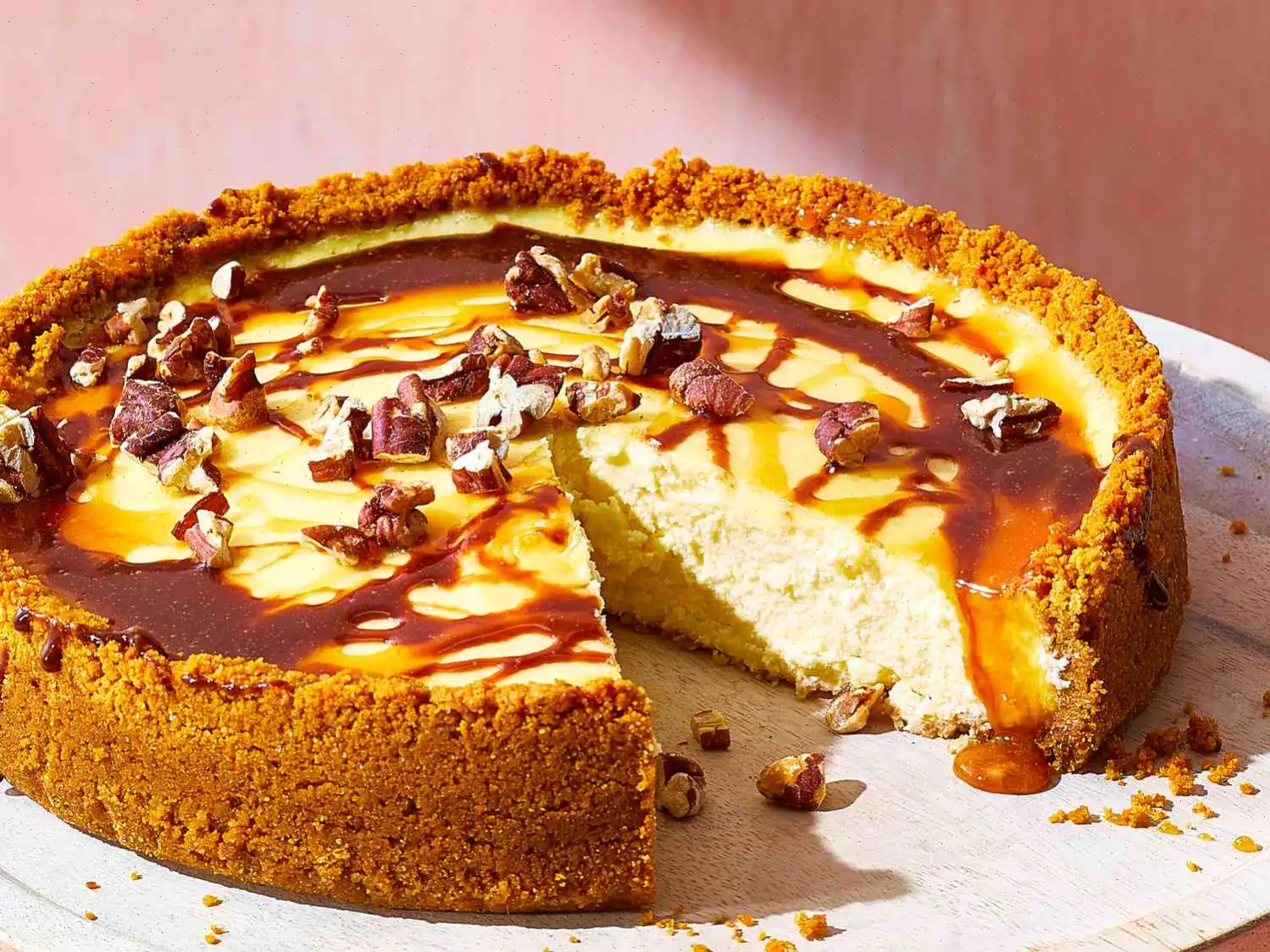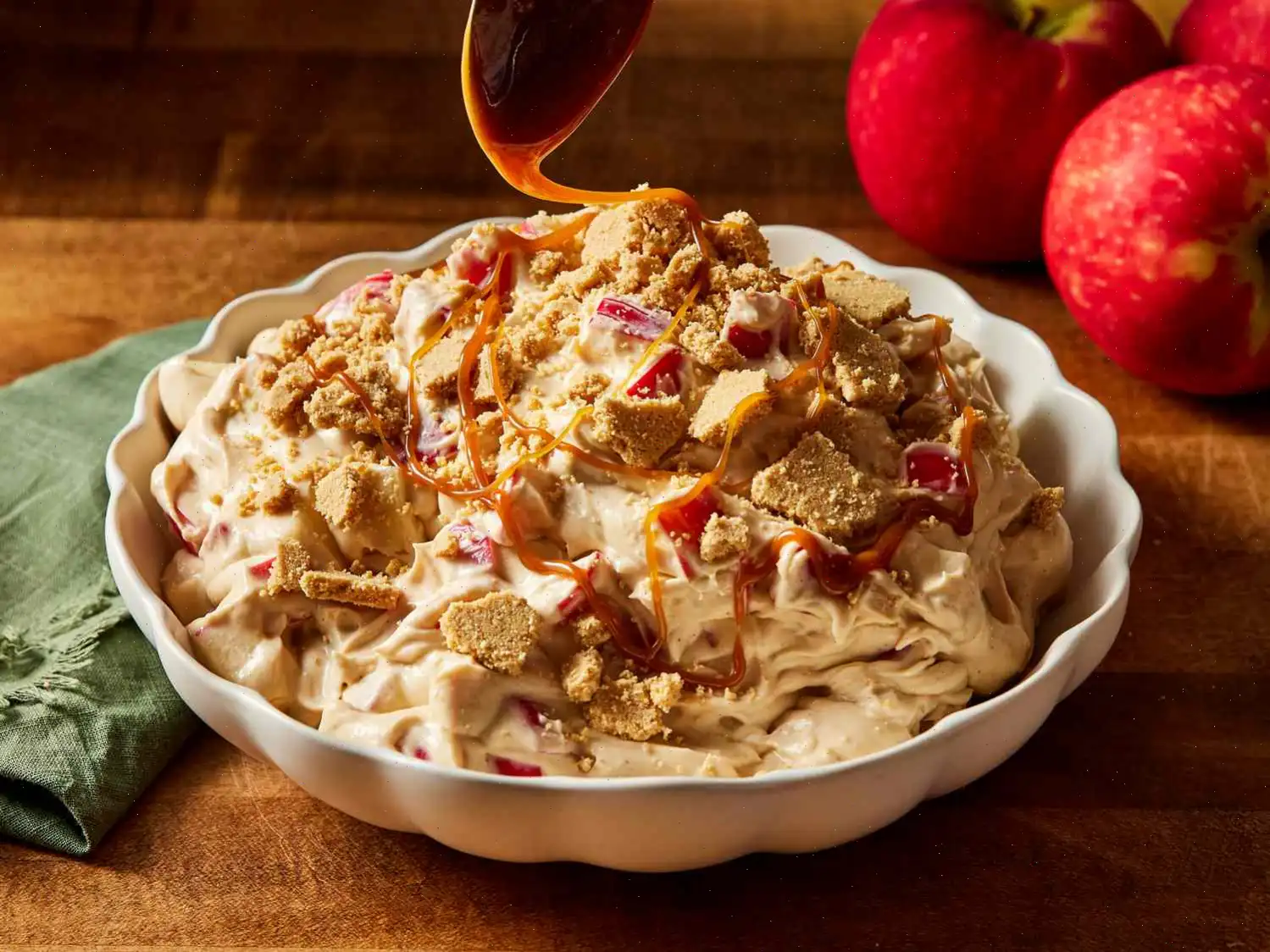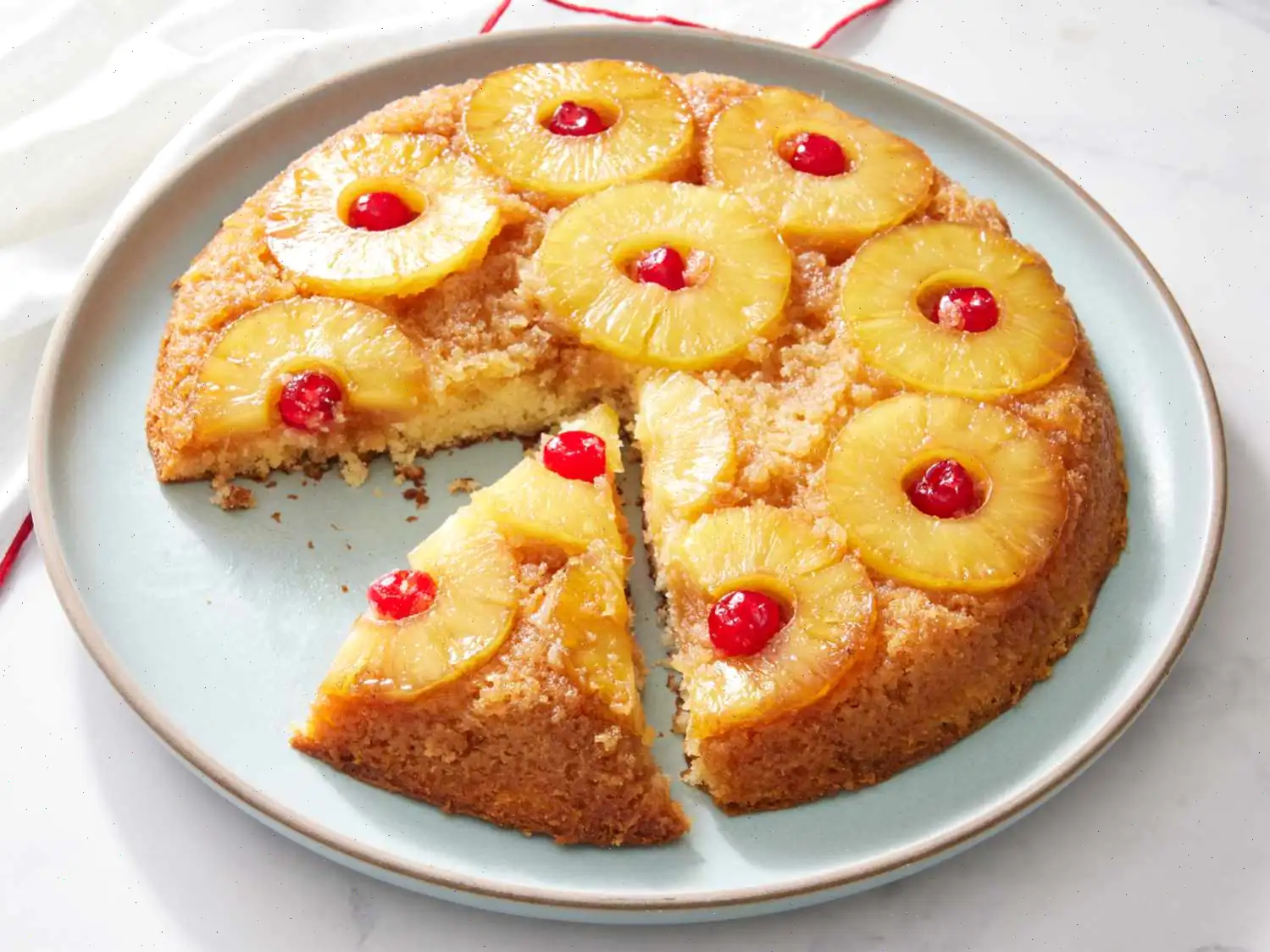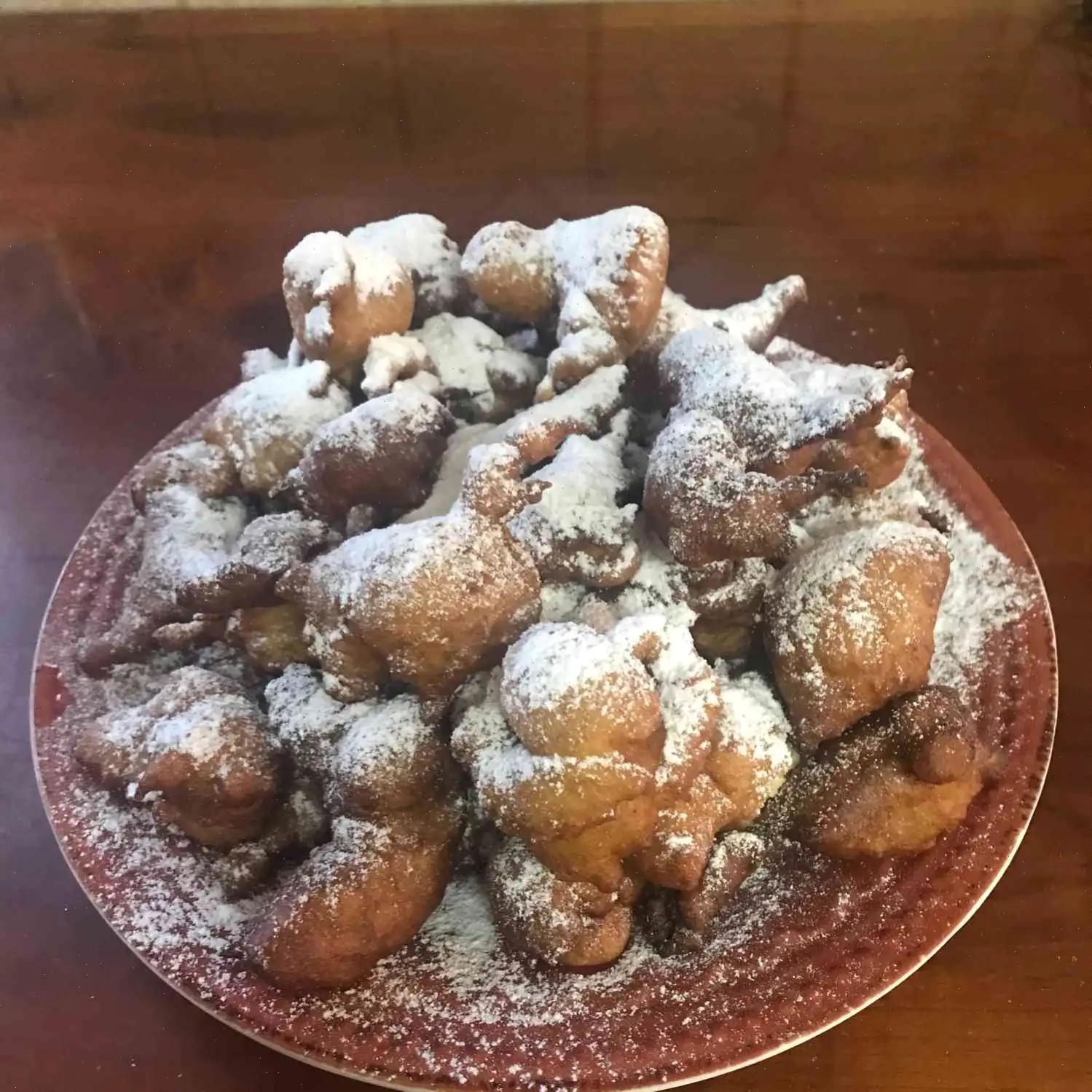
Mini Cheesecakes Recipe
This mini cheesecake recipe creates bite-sized treats that are sure to please any crowd. They're easy to make in minutes and look beautiful on a serving platter. Here's how you can make them at home:
Mini Cheesecake Ingredients
- Vanilla wafers: The cheesecake crust is made with crushed Vanilla wafer cookies.
- Cream cheese: The base of the mini cheesecake filling is, of course, cream cheese.
- Sugar: Youll need cup white sugar.
- Eggs: Two whole eggs lend richness and help bind the filling together.
- Vanilla: A teaspoon of vanilla extract enhances the overall flavor.
- Pie filling: Finish the baked mini cheesecakes with canned pie filling.
How Long to Bake Mini Cheesecakes
In an oven preheated to 350F (175C), the mini cheesecakes should be fully baked after about 15 minutes. The filling is set when it jiggles just a little in the center (it will finish setting as it cools).
How to Store Mini Cheesecakes
Store the mini cheesecakes in an airtight in the fridge for up to four days. Never let them sit at room temperature for more than two hours at a time.
Can You Freeze Mini Cheesecakes?
Yes, you can freeze these mini cheesecakes. Flash freeze them on a baking sheet, then transfer the now-frozen cheesecakes to a zip-top freezer bag. Squeeze out the excess air, seal the bag, and wrap the bag (flat) with aluminum foil. Freeze for up to two months, then thaw in the fridge overnight.
Ingredients
- 1 (12 ounce) package vanilla wafers
- 2 (8 ounce) packages cream cheese
- cup white sugar
- 2 large eggs
- 1 teaspoon vanilla extract
- 1 (21 ounce) can cherry pie filling
Directions
- Gather all ingredients.
- Preheat the oven to 350F (175C). Line two 24-cup miniature muffin tins with paper liners.
- Crush the vanilla wafers. Press teaspoon of crushed vanilla wafers into each paper cup.
- In a mixing bowl, beat the cream cheese, sugar, eggs, and vanilla until light and fluffy.
- Fill each miniature muffin liner with this mixture, almost to the top.
- Bake in the preheated oven for 15 minutes until the cheesecake is set. The center should jiggle slightly.
- Allow the cheesecakes to cool completely.
- Top each mini cheesecake with a teaspoonful of cherry pie filling.
- Serve and enjoy!
Nutrition Facts (per serving)
- Calories: 95
- Total Fat: 5g (6% Daily Value)
- Saturated Fat: 2g (12% Daily Value)
- Cholesterol: 17mg (6% Daily Value)
- Sodium: 63mg (3% Daily Value)
- Total Carbohydrates: 12g (4% Daily Value)
- Dietary Fiber: 0g (1% Daily Value)
- Total Sugars: 6g
- Protein: 1g (2% Daily Value)
- Vitamin C: 0mg (0% Daily Value)
- Calcium: 12mg (1% Daily Value)
- Iron: 0mg (0% Daily Value)
- Potassium: 35mg (1% Daily Value)
Note: Percent Daily Values are based on a 2,000 calorie diet. Your daily values may be higher or lower depending on your calorie needs.
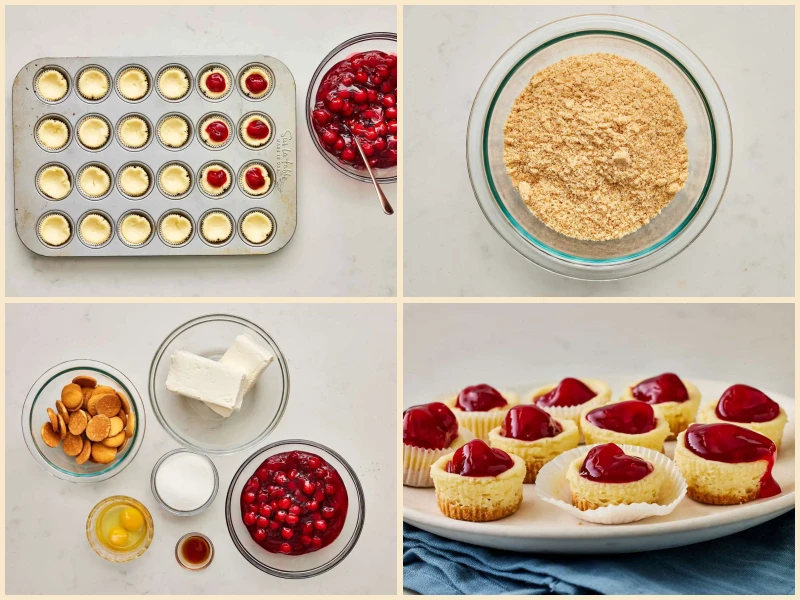
Mini cheesecakes are a popular variation of the classic cheesecake, served in a convenient, bite-sized form that makes them perfect for parties, gatherings, and special occasions. Their creamy texture and buttery crust have made them a favorite across the globe. But where did they come from, and how do they differ from other similar desserts? Lets take a closer look at the history, regional features, and interesting facts surrounding this beloved treat.
History and Origin
The origins of the cheesecake date back to ancient Greece, where it was considered a form of energy food for athletes. The earliest known cheesecake recipes date back to the 5th century BCE, where they were served during Olympic games. However, the modern version of cheesecake, as we know it today, evolved in Europe, especially in France and Germany. It wasnt until the early 20th century that cheesecake became widely popular in the United States, with the addition of cream cheese as the main ingredient.
Mini cheesecakes, as a smaller, individual serving size, gained popularity much later in the 20th century, particularly in the 1950s and 1960s. They quickly became a go-to dessert for large gatherings, as they are easier to serve and eat in a casual setting.
Regional Features
Mini cheesecakes are often prepared in various ways depending on the region. In the United States, the classic mini cheesecake is typically made with a graham cracker or vanilla wafer crust, topped with a simple cream cheese filling. It is most commonly served at parties, barbecues, and holiday gatherings. In contrast, in countries like Japan, mini cheesecakes tend to be lighter and fluffier, with a delicate sponge cake base. Japanese cheesecakes are typically less sweet, focusing more on the airy texture than on the richness of the filling.
Another regional variation can be found in the United Kingdom, where mini cheesecakes are often served with fresh berries or traditional custard instead of pie fillings. In these regions, the flavor profile is often more tart and less sugary, offering a nice contrast to the richer American versions.
How They Differ from Similar Desserts
While mini cheesecakes share similarities with other small desserts like tarts and cupcakes, their texture and flavor set them apart. Unlike a traditional tart, which typically has a more delicate pastry crust, the cheesecake crust is firmer and more buttery, thanks to ingredients like graham crackers or cookies. Additionally, the filling is distinctly creamier and denser than a mousse or pudding-based filling found in many cupcakes or tarts.
What really distinguishes mini cheesecakes is their versatility. They can be topped with a variety of ingredients, from fruit and pie fillings to chocolate or even caramel, allowing for a wide range of flavors that can cater to different tastes. This versatility makes them unique compared to other individual-sized desserts, which are often more limited in flavor options.
Where Are They Typically Served?
Mini cheesecakes are a popular choice for both formal and informal events. Their small size makes them ideal for buffets, cocktail parties, and picnics, where guests can easily grab a bite-sized treat without the need for utensils. They are also frequently served at weddings, birthdays, and other celebrations, offering a fun and convenient alternative to the traditional large cheesecake.
In addition to these special occasions, mini cheesecakes can also be found at bakeries and dessert shops, often displayed as individual servings in glass cases. Their bite-sized nature makes them an appealing option for people who want to indulge in a rich dessert without committing to a full slice.
Interesting Facts About Mini Cheesecakes
- Mini cheesecakes are often easier to make than traditional cheesecakes, as they require less baking time and can be customized with various toppings.
- Many bakers experiment with different crusts for mini cheesecakes, such as using crushed Oreos, pretzels, or even chocolate cookies for a more decadent base.
- The versatility of mini cheesecakes means they can be made in a wide range of flavors, from classic strawberry to exotic options like matcha, lemon-lavender, or pumpkin spice.
- These little treats have a higher rate of success in terms of presentation, as they are less prone to cracking than large cheesecakes, making them ideal for those seeking perfection in both taste and appearance.
- Mini cheesecakes are often made as a no-bake version, where the filling is set in the fridge rather than baked, providing a different texture and flavor profile compared to the traditional baked variety.
Whether you're serving them at a fancy dinner party or enjoying them as a casual dessert, mini cheesecakes continue to be a beloved treat with a rich history and endless possibilities for customization.
You can listen to this recipe in AI audio format. Simply click the play button below to listen to the content in a format that suits you best. It’s a great way to absorb information on the go!
FAQ about Mini Cheesecakes Recipe
Comments
Barbara Collins
12/20/2024 11:20:32 PM
For those seeking a unique crust, try using 2 cups of graham cracker crumbs, 8 tablespoons of margarine, and 8 tablespoons of sugar. Combine well by hand, press about a tablespoon into mini muffin liners, add the cream cheese filling and fruit on top. This method works perfectly!
Dorothy Clark
09/24/2023 06:44:44 PM
Really enjoyed these! Only issue was the crust crumbling. Would recommend adding a bit of butter!
Melissa Jackson
07/11/2024 10:04:17 PM
I made these for my mother's birthday, and she absolutely loved them!
Sarah Turner
06/13/2023 12:51:22 PM
Rewritten review: The taste was delicious, but I encountered two significant issues with the recipe that surprised me as they weren't commonly mentioned. Firstly, I found myself with a surplus of crust mixture, even after packing a full teaspoon into each cup; I had half a bowl's worth left over, which felt like a waste. Secondly, the recipe failed to specify the ideal temperatures for the cream cheese and eggs. I assumed they should have been at room temperature, as my batter turned out very lumpy when mixed cold. Had this detail been included, I would have planned ahead accordingly. Despite these challenges, the final product tasted good and I may attempt the recipe again with some modifications.
Jason Carter
06/12/2024 01:29:08 PM
I have prepared three variations of fruit-filled cheesecake tarts: blackcurrant, raspberry, and lemon curd. Later, I will be making peach and cherry tarts for a special birthday celebration. Instead of sugar, I opted for granulated stevia granules, using a smaller amount for sweetness. For the lemon tarts, I added finely grated lemon zest, resulting in a truly delicious flavor. I always make extra because they vanish so quickly!
Thomas Walker
05/03/2025 01:09:59 PM
I absolutely adored these! Instead of using wafers, I opted for Oreo crumbs for the base and sprinkled crushed mini eggs on top, along with a drizzle of chocolate. They were absolutely delicious! I found that baking them for just 10 minutes was perfect, rather than the suggested 15.


